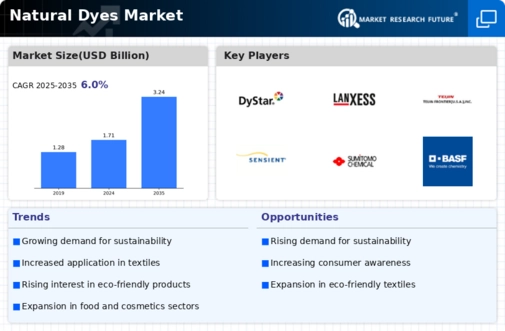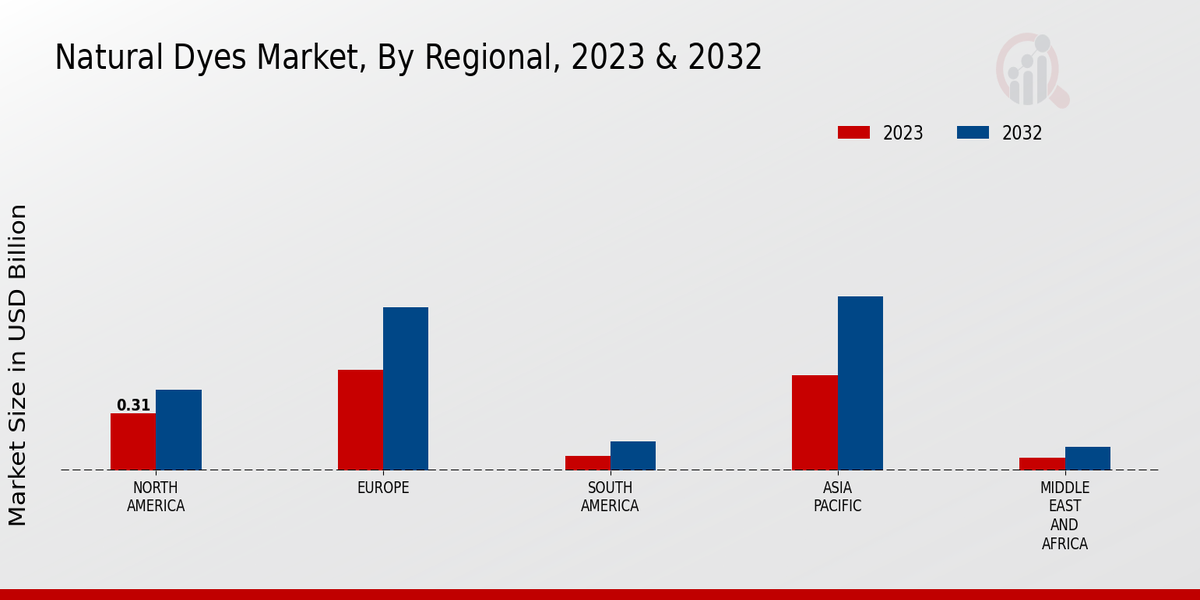Market Growth Projections
Rising Demand in the Textile Industry
The textile industry is a significant driver of the Global Natural Dyes Market Industry, as there is a growing demand for sustainable and organic fabrics. Consumers are increasingly seeking textiles dyed with natural dyes due to their reduced environmental impact and health benefits. This trend is particularly evident in fashion and home textiles, where brands are adopting natural dyes to appeal to eco-conscious consumers. The market is anticipated to grow substantially, with projections indicating a rise to 3.24 USD Billion by 2035. This demand underscores the potential for natural dyes to become a mainstream choice in the textile sector.
Diverse Applications Across Industries
The versatility of natural dyes across various industries significantly contributes to the growth of the Global Natural Dyes Market Industry. Beyond textiles, natural dyes find applications in food, cosmetics, and pharmaceuticals, where they are valued for their safety and non-toxic properties. For example, natural dyes are increasingly used in food products to enhance visual appeal without synthetic additives. This broad applicability not only diversifies the market but also attracts a wide range of consumers and manufacturers. As industries continue to explore natural alternatives, the market for natural dyes is poised for substantial expansion.
Regulatory Support for Sustainable Practices
Regulatory frameworks across various countries are increasingly supporting sustainable practices, which significantly benefits the Global Natural Dyes Market Industry. Governments are implementing policies that encourage the use of natural dyes, particularly in textiles and food industries, to reduce environmental impact. For instance, initiatives promoting organic farming and sustainable production methods are gaining traction. This regulatory support not only enhances the credibility of natural dyes but also incentivizes manufacturers to transition from synthetic to natural alternatives. As a result, the market is likely to expand, aligning with global sustainability goals.
Technological Advancements in Dye Extraction
Technological advancements in the extraction and application of natural dyes are transforming the Global Natural Dyes Market Industry. Innovations in extraction methods, such as enzyme-assisted extraction and supercritical fluid extraction, enhance the efficiency and yield of natural dyes. These technologies not only improve the quality of dyes but also reduce production costs. As a result, manufacturers can offer competitive pricing while maintaining the integrity of natural products. This technological evolution is expected to drive market growth, with projections indicating a compound annual growth rate of 5.99% from 2025 to 2035.
Growing Consumer Preference for Eco-Friendly Products
The Global Natural Dyes Market Industry experiences a notable shift as consumers increasingly favor eco-friendly products. This trend is driven by heightened awareness of environmental issues and the harmful effects of synthetic dyes. As a result, manufacturers are compelled to adopt natural dyes, which are biodegradable and derived from renewable resources. This consumer preference is projected to contribute to the market's growth, with the industry expected to reach 1.71 USD Billion in 2024. The demand for sustainable textiles and cosmetics further underscores this trend, indicating a robust market potential for natural dyes in various sectors.














